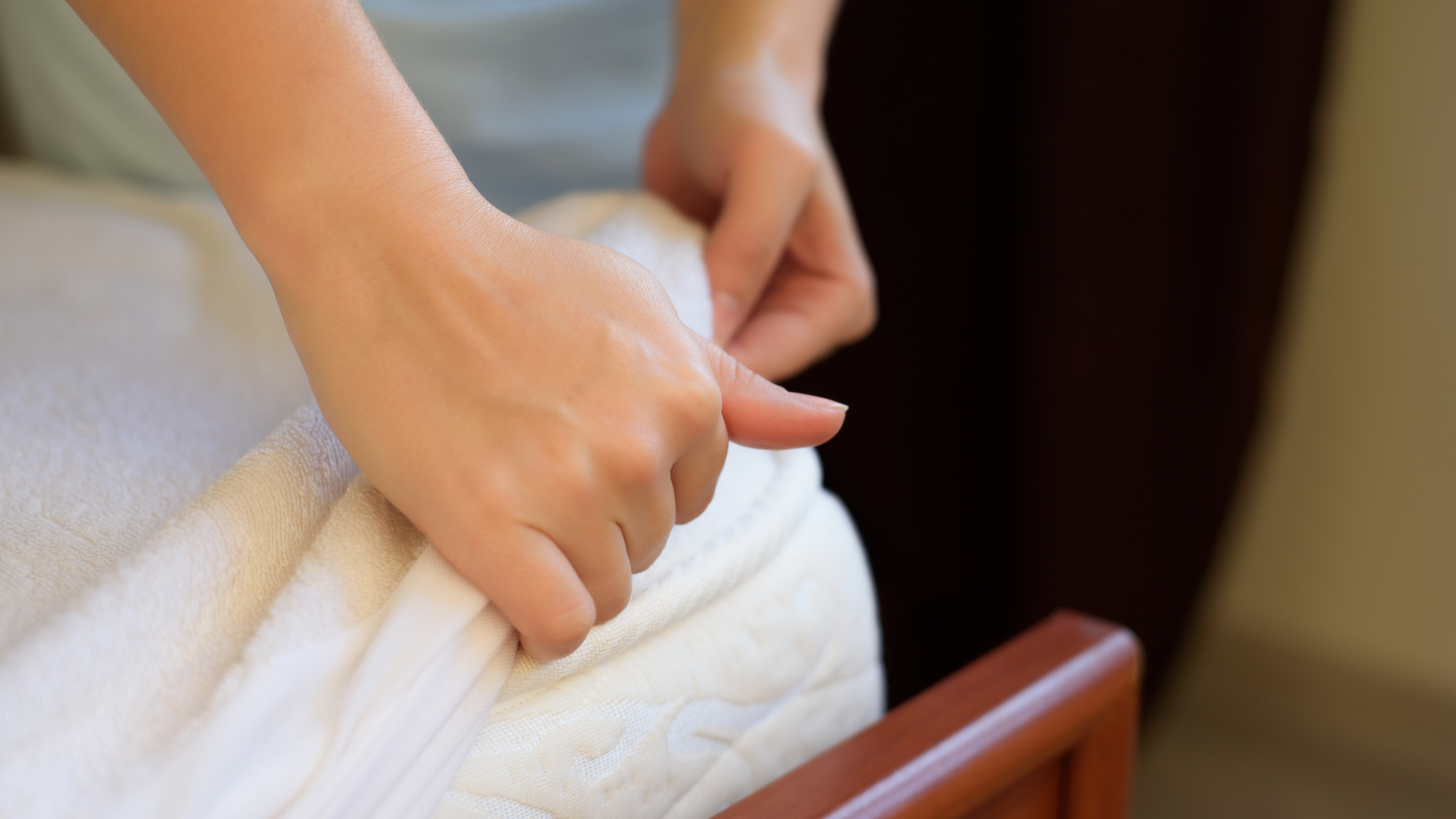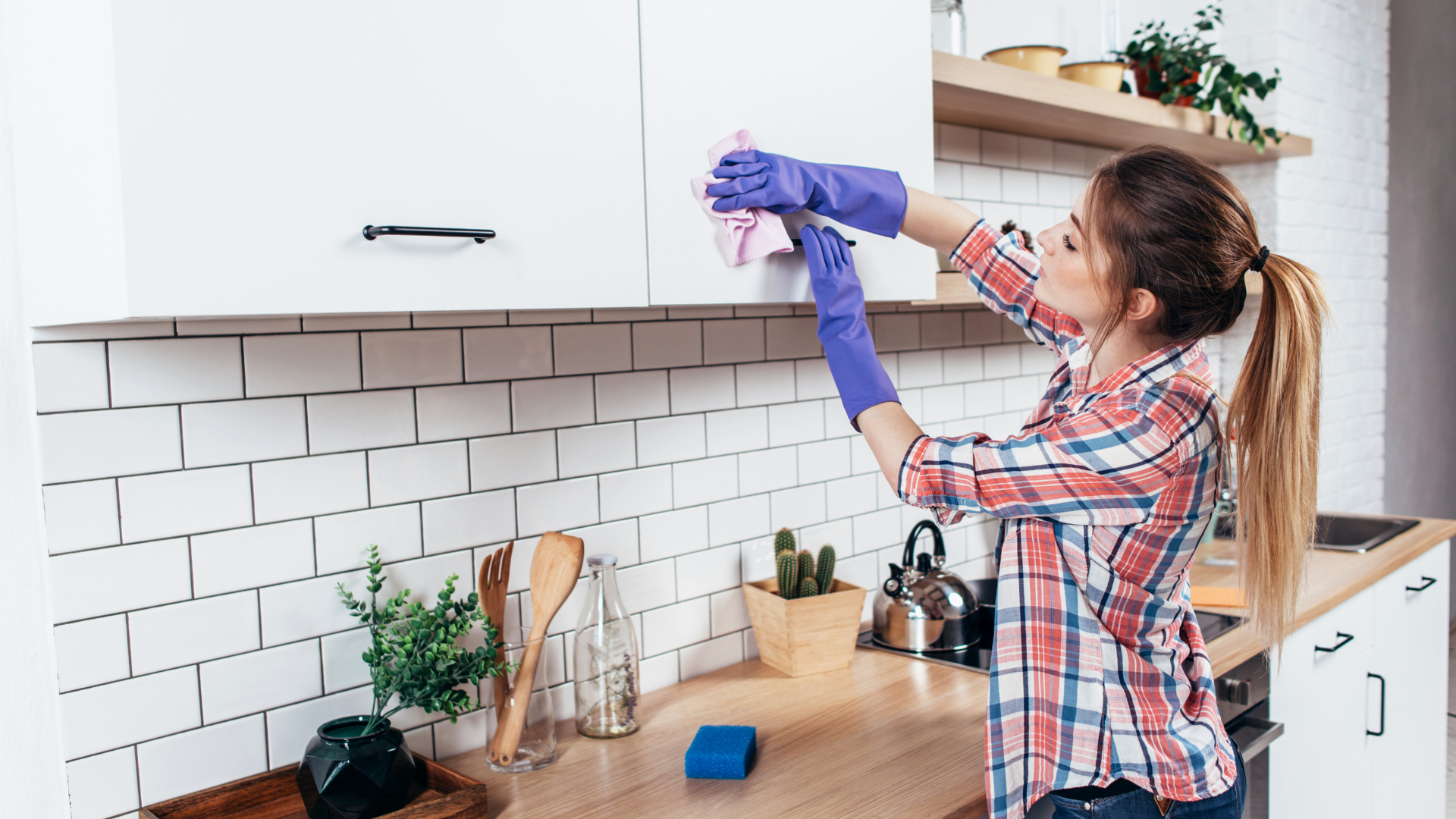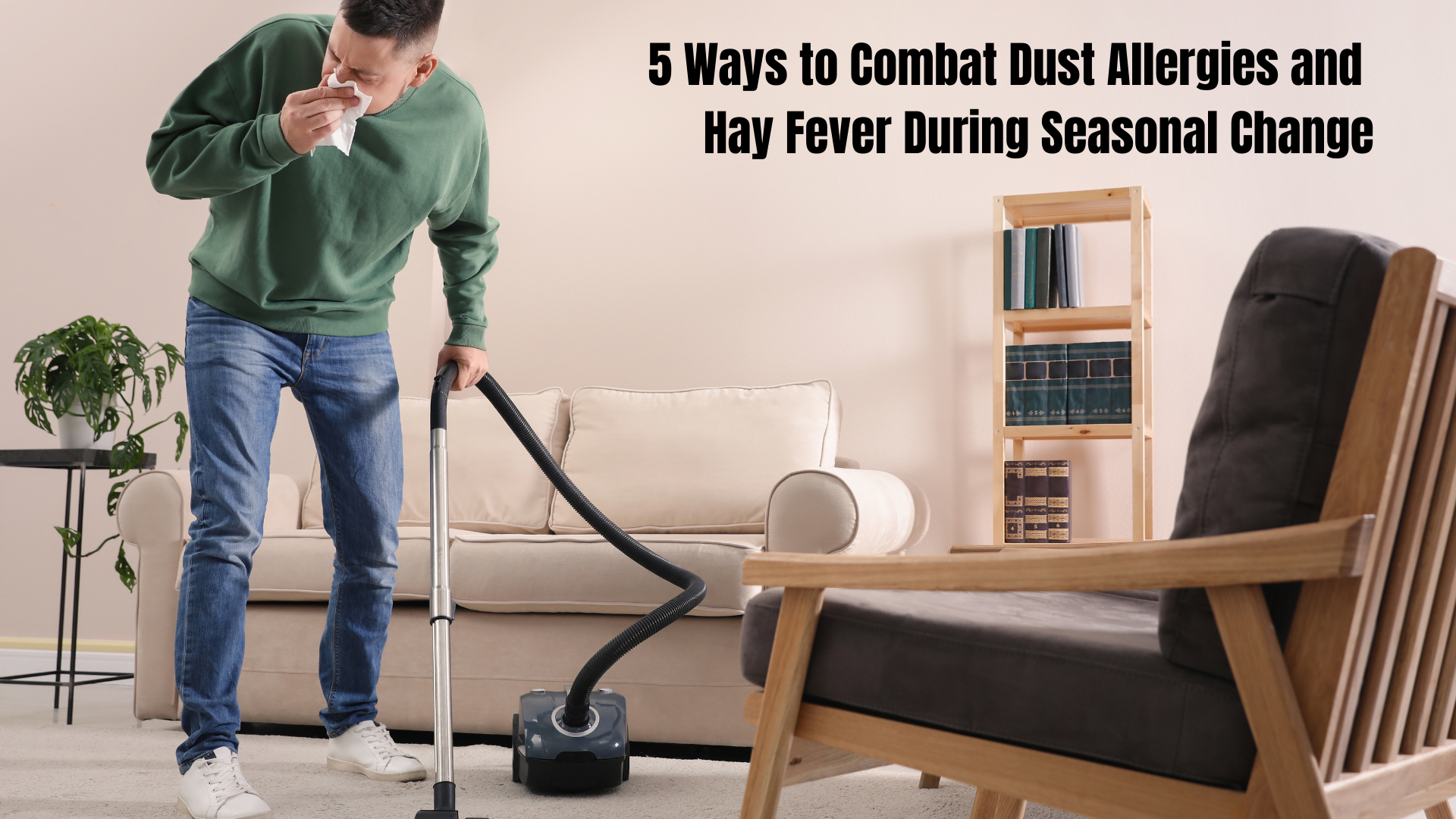Seasonal changes can be both a blessing and a curse. As we transition between seasons, the beautiful transformation of nature often comes with a downside for many: the onslaught of dust allergies and hay fever. These allergic reactions can cause discomfort, ranging from mild sniffles to debilitating symptoms.
Fortunately, we’ve got your back!
What Are Dust Allergies, and How Do They Impact You?
At a fundamental level, dust allergies are the body’s immune response to specific components found in household dust. This dust mixes various elements, including dead skin cells, hair, pet dander, mold spores, etc. However, tiny bugs called dust mites are the primary culprit behind dust allergies. These microscopic creatures thrive in our homes’ warm, humid environments, especially in bedding, upholstered furniture, and carpets.
When an individual inhales or comes in direct contact with these dust particles or mite waste products, the immune system might perceive them as threats. As a response, it releases histamines, which lead to the classic allergic symptoms.
How Does Seasonal Change Intensify Dust Allergies?
Seasonal transitions often bring about heightened dust allergy symptoms. The fluctuating temperatures and humidity create ideal conditions for dust mites to flourish. As seasons like summer or winter prompt individuals to remain indoors, increased activity can stir up settled dust, making allergens more airborne.
Additionally, many undertake seasonal home renovations or deep cleaning, disturbing settled dust and reintroducing environmental allergens. Furthermore, during colder months, reduced ventilation due to sealed homes traps allergens inside, concentrating dust particles. Awareness of these seasonal impacts allows individuals to manage their exposure and mitigate allergy symptoms.
Leverage the Power of Norwex Microfiber Cloths

In the quest to combat dust allergies, the tools we choose are just as crucial as the cleaning products. One such tool making waves in the eco-friendly cleaning realm is the Norwex Microfiber Cloth. But what sets it apart from traditional cleaning cloths?
- Superior Cleaning Capability: The ultra-fine fibers in Norwex cloths are designed to pick up even the tiniest particles, including dust mites and their waste products, which are common allergens.
- Water is All You Need: Norwex Microfiber Cloths can effectively clean surfaces using water, eliminating the need for chemical cleaning agents. This reduces the potential for allergic reactions to cleaning solutions.
- Reusable and Sustainable: These cloths are durable and long-lasting, making them an eco-friendly choice. You can wash and reuse them multiple times, reducing waste and ensuring you always have a clean cloth.
Incorporating Norwex Microfiber Cloths into your cleaning routine can significantly reduce allergens in your home. Their effectiveness and eco-friendly nature make them superior for minimizing dust allergies while promoting a greener household.
How Do Norwex Cloths Trap and Remove Dust and Bacteria Efficiently?
Norwex Microfiber Cloths stand out from regular cleaning cloths due to their innovative design and effectiveness. Here’s how they excel in trapping and removing dust and bacteria:
- Dense Microfiber Structure: Each Norwex cloth contains millions of microfibers, each finer than human hair. This rank structure allows the fabric to capture and hold onto minute particles, including dust and bacteria, rather than simply pushing them around.
- Electrostatic Action: As you use the cloth, it generates a natural electrostatic charge. This charge attracts and holds onto dust particles, making it especially effective during dry dusting tasks.
- BacLock Technology: Some Norwex cloths feature BacLock, an antibacterial agent that helps reduce mold, fungi, and bacterial odor within the fabric. This ensures that the material remains more hygienic between washes.
- High Absorbency: The microfibers can hold up to seven times their weight in water, ensuring they pick up and retain liquids, spills, and debris effectively.
Norwex Microfiber Cloths provide a superior cleaning experience through their unique construction and innovative features. They capture dust and bacteria and ensure they are removed from your home’s surfaces, creating a cleaner, healthier environment.
4 Ways to Mitigate Allergic Reactions
1. Embrace Eco-Friendly, Non-Toxic Cleaning Products

Our cleaning products can play a pivotal role in combating and inadvertently intensifying dust allergies. Conventional cleaning agents often contain harsh chemicals and fragrances that can irritate the respiratory system and trigger allergic reactions. Switching to eco-friendly and non-toxic products offers a two-fold benefit.
Firstly, these products are gentle on the environment, reducing the pollutant load on our planet. Secondly, they are kinder to our health. They effectively clean surfaces without leaving harmful residues or releasing irritating fumes.
Eco-friendly cleaning products are formulated with natural ingredients, minimizing the risk of allergic reactions. By eliminating potential irritants from our cleaning routine, we ensure a cleaner living environment and a safer one.
When shopping, look for labels that indicate “biodegradable,” “phthalate-free,” or “made with plant-based ingredients.” Making this simple switch can make a significant difference in managing dust allergies and ensuring a healthier home environment.
How Can Traditional Cleaning Products Worsen Allergy Symptoms?
While effective in removing dirt and grime, traditional cleaning products often come with a hidden cost to our health. These products can contain various chemicals and synthetic fragrances that may exacerbate allergy symptoms:
- Chemical Irritants: Many conventional cleaners contain chemicals like ammonia, chlorine, or formaldehyde. These can irritate the eyes, nose, and throat, mimicking or intensifying allergy symptoms.
- Synthetic Fragrances: Added to give a fresh scent, these fragrances can trigger allergic reactions or asthma in sensitive individuals. They can cause symptoms like sneezing, runny nose, or skin rashes.
- Volatile Organic Compounds (VOCs): These compounds evaporate into the air when products are used and can lead to indoor air pollution. Breathing in VOCs can worsen respiratory allergies and even cause headaches or dizziness.
2. Opt for Dust Mite-Resistant Bedding

One of the most critical battlegrounds in the fight against dust allergies is our bed. Given the warmth, humidity, and abundant supply of dead skin cells, it’s a haven for dust mites. However, you can take a proactive step to reduce their presence: switching to dust mite-resistant bedding significantly.
- Barrier Protection: Dust mite-resistant bedding, often labeled “allergen-proof,” features tightly woven fabric that prevents dust mites and their waste products from penetrating. This acts as a barrier between you and potential allergens.
- Breathable Fabrics: While they block allergens, these bedding options are made of breathable materials, ensuring nighttime comfort.
- Easy to Clean: Dust mite-resistant bedding can be regularly washed in hot water, a temperature at which dust mites cannot survive, ensuring your bed remains an allergen-free zone.
- Protection Beyond the Mattress: While mattresses are hotspots, remember pillows, duvets, and comforters. Many brands offer complete sets, ensuring comprehensive safety.
By choosing dust-mite-resistant bedding, you’re committed to healthier sleep. It’s a simple change, but its impact on reducing dust allergies is substantial, offering a night’s rest free from common allergens.
What Care Instructions Can Extend the Lifespan of Allergen-Resistant Beddings?
Investing in allergen-resistant bedding is a step towards a healthier sleep environment. To maximize their effectiveness and lifespan, proper care is essential. Here are some care instructions:
- Regular Washing: Wash your allergen-resistant beddings in hot water, preferably above 130°F (54°C). This kills dust mites and preserves the fabric’s tight weave.
- Avoid Bleach: While it might seem like a good idea for deep cleaning, bleach can damage the fabric and reduce its allergen-blocking capabilities. Opt for gentle, eco-friendly detergents instead.
- Dry Thoroughly: Ensure that bedding is completely dry before placing it back on your bed. Any residual moisture can become a breeding ground for mold or mildew.
- Protective Covers: Use protective covers for mattresses and pillows. These add a layer of protection and can be easily removed and washed.
- Regular Inspections: Periodically inspect your bedding for any signs of wear or damage. If you notice any areas where the weave seems loose or compromised, consider replacing that piece.
Following these care instructions ensures that your allergen-resistant beddings remain effective for years, offering a safe and comfortable sleeping environment.
3. Invest in Quality Air Purifiers

Airborne allergens, including dust mite debris, pollen, pet dander, and mold spores, can continuously circulate in our homes, triggering or exacerbating allergies. An effective strategy to combat this problem is investing in high-quality air purifiers. Here’s how they bolster allergy relief:
- High-Efficiency Particulate Air (HEPA) Filters: Most quality air purifiers utilize HEPA filters, designed to capture 99.97% of particles as small as 0.3 microns. This means they effectively trap common allergens, reducing their concentration in the air.
- Activated Carbon Filters: These filters excel at removing odors and volatile organic compounds (VOCs), which can also contribute to respiratory irritations.
- Reduced Reliance on Chemical Air Fresheners: The need for synthetic air fresheners diminishes with cleaner air, thereby reducing exposure to potentially irritating chemicals.
- Targeted Allergen Removal: Some cleaners have customizable settings to target specific allergens, whether pollen during spring or pet dander if you have furry friends.
By consciously investing in quality air purifiers, you actively prioritize your health and well-being. They work silently in the background, ensuring every breath you take is cleaner, fresher, and less likely to trigger allergic reactions.
What Features Should You Look for in Air Purifiers for Hay Fever?
The right air purifier can be transformative for those battling hay fever from airborne allergens like pollen and pet dander. Prioritize models with genuine HEPA filters that capture 99.97% of tiny particles. An essential feature is filter change indicators for timely replacements, ensuring continued efficacy.
Adjustable fan speeds accommodate varying allergen levels, while advanced models sport air quality sensors for real-time adjustments. Noise can be a concern; opt for models with a quiet mode, particularly for bedrooms. Lastly, match the purifier’s coverage area with your room size. With these features, you’ll alleviate hay fever symptoms and boost overall indoor air quality.
4. Implement Regular Home Cleaning

While external factors often exacerbate allergy symptoms, our homes can unknowingly become reservoirs for allergens if not maintained. Regular cleaning is not just about aesthetics; it’s a frontline defense against allergens. Here’s why consistent home upkeep is vital:
- Dust Buildup: Neglecting areas for extended periods allows dust and allergens to accumulate. Regular dusting, particularly with damp cloths, ensures these particles are captured and removed.
- Mold Prevention: By routinely cleaning and drying wet areas, especially bathrooms and kitchens, you reduce the risk of mold growth, a common allergen.
- Carpet Care: Carpets can trap a variety of allergens. Vacuuming with a cleaner equipped with a HEPA filter and periodic deep cleaning can significantly reduce their allergen load.
- Pet Allergens: If you have pets, regular grooming, coupled with frequent cleaning of their living spaces, will minimize dander and related allergens.
By prioritizing regular home cleaning, you actively curtail the accumulation of allergens, providing a safer, healthier living space for you and your loved ones.
Why Is Deep Cleaning Crucial for People Dealing with Allergies?
Deep cleaning dives beyond surface grime, targeting stubborn allergens embedded in carpets, furniture, and drapes. Overlooked spots in homes often harbor mold and mildew, especially in damp areas like behind appliances or under sinks. By meticulously cleaning these areas, you not only eradicate potential allergen hotspots but also enhance the overall indoor air quality. This thorough approach amplifies the benefits of other allergy prevention tools, such as air purifiers. Integrating deep cleaning into their routine isn’t just another chore for allergy sufferers—it’s a vital step towards creating a healthier, more breathable living environment.
Beyond Cleaning: What Other Strategies Can Help Manage Hay Fever?
While regular and deep cleaning is pivotal in managing hay fever, it’s just one facet of a comprehensive approach. There are other proactive measures you can adopt:
- Stay Informed: Keep an eye on local pollen forecasts. On high pollen days, stay indoors during peak times, usually mid-morning and early evening.
- Ventilation Wisdom: Use window screens to prevent pollen from entering your home. Consider using air conditioning instead of opening windows on days with high pollen counts.
- Personal Care: After outdoor activities, shower to rinse pollen from your skin and hair. Regularly wash your hands, especially after petting animals that have been outside.
- Natural Remedies: Consider non-prescription remedies like saline nasal rinses or Neti pots. They can help clear out pollen and other irritants from nasal passages.
By actively integrating these strategies alongside regular cleaning, you can significantly reduce hay fever symptoms and enjoy a more comfortable living environment.
Ready to Breathe Easier? Take Charge and Tackle Dust Allergies Head-On!
Elevate your cleaning experience with Green Home and Office. Prioritize peace of mind by adhering to safety standards and cutting-edge green technology. Using HEPA filters and color-coded tools, ensuring spaces that aren’t just visibly clean but genuinely hygienic will significantly reduce symptoms.
We’re more than a service; we’re a local, family-owned partner deeply committed to sustainability, curating only eco-friendly products. Beyond cleaning, we passionately support our community by joining various charities. Experience a healthier, cleaner space. Choose Green Home and Office today!




